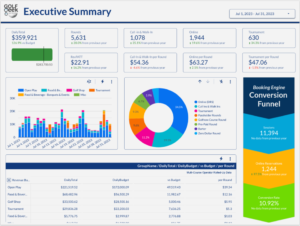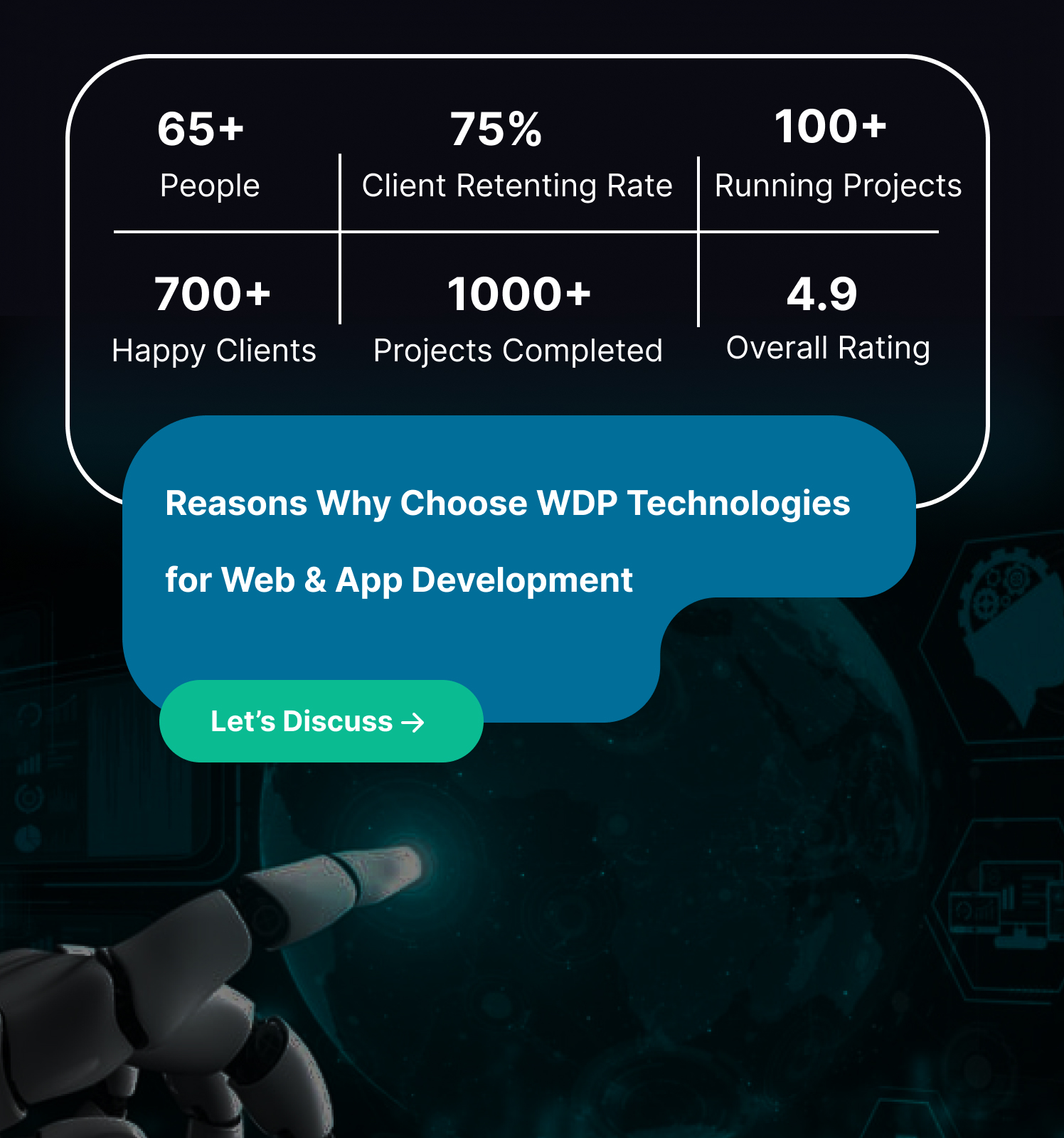Hey there, fellow golf enthusiasts! Have you ever wondered what it takes to keep a golf course running smoothly? Imagine trying to manage tee times, memberships, course maintenance, and even the pro shop all at once. Sounds overwhelming, right? That’s where golf course management software comes in to save the day.
Developing custom golf course management software might seem like a daunting task, but it can be a game-changer for your business. In this blog, we’ll unpack the exciting world of custom software development, sparking your imagination with innovative features and functionalities that can revolutionize your course.
Get ready to explore the possibilities! We’ll guide you through the core functionalities every course needs, introduce some cutting-edge add-ons, and even provide a roadmap for the development process. By the end, you’ll be brimming with ideas to craft the perfect software solution that takes your course from the green to a digital dream.
What is Golf Course Management Software?

Golf course management software is a specialized tool designed to streamline and enhance the operations of a golf course. This software encompasses a variety of functions, such as managing tee time bookings, overseeing membership details, scheduling course maintenance, handling pro shop inventory, and facilitating customer relationship management (CRM).
By integrating these diverse aspects into one cohesive system, golf course management software simplifies the administrative workload, allowing managers to focus more on providing an excellent experience for golfers. With features like real-time booking, automated maintenance reminders, and comprehensive member profiles, this software ensures that both the operational efficiency of the course and the satisfaction of its patrons are maximized.
Is It Worth To Invest in Developing Golf Course Management Software in 2024?
In 2024, developing golf course management software can be a strategic move, but it depends on your course’s specific needs. The global golf course management software market is expected to reach a whopping $500 Million by 2027, reflecting a Compound Annual Growth Rate (CAGR) of 11.0%. That indicates a growing demand for streamlined course operations.
As the golfing industry continues to expand, the demand for efficient, integrated digital solutions to streamline operations is growing. Golf course managers are increasingly looking for ways to automate tasks like tee time bookings, membership management, course maintenance, and customer engagement to improve operational efficiency and enhance the golfer experience. This software not only simplifies administrative workloads but also provides valuable data insights for informed decision-making. With more golf courses adopting advanced technology, having a robust management system offers a significant competitive edge, making it a smart investment for developers and golf course operators alike.
Why To Develop Golf Course Management Software?
Developing golf course management software offers a multitude of advantages that can significantly benefit both golf course operators and players alike. Let’s explore these benefits in detail:
1. Operational Efficiency:
Automating tasks such as tee time bookings, membership management, and course maintenance scheduling streamlines operations. This automation reduces the administrative burden on staff, allowing them to focus more on delivering exceptional service and enhancing the overall experience for golfers. By minimizing manual errors and optimizing time management, golf course management software enhances operational efficiency and lowers operational costs.
2. Enhanced Customer Experience:
Golfers today expect seamless, user-friendly experiences when booking tee times and engaging with their favorite courses. Golf course management software meets these expectations by offering features like real-time booking availability, online reservations, and personalized communication channels. Additionally, efficient membership management and loyalty program tracking ensure that golfers feel valued and appreciated, fostering a strong sense of community and loyalty.
3. Data-Driven Decision Making:
Modern golf course management software provides robust analytics capabilities that empower operators to make informed decisions. By analyzing data on customer behavior, sales trends, and course utilization, operators can optimize resource allocation, marketing strategies, and overall business performance. This data-driven approach not only enhances operational efficiency but also helps in identifying growth opportunities and improving financial outcomes.
4. Competitive Advantage:
In a competitive market, offering advanced technology solutions can set a golf course apart from its competitors. Golfers are increasingly drawn to courses that provide convenient, modern amenities such as online booking systems and personalized customer service. By investing in golf course management software, operators can attract more golfers, retain existing members, and strengthen their position in the marketplace.
5. Resource Management:
Effective management of resources is crucial for maintaining a well-kept and sustainable golf course. Golf course management software facilitates efficient scheduling and tracking of maintenance tasks, ensuring that the course remains in optimal condition year-round. Moreover, streamlined inventory management for pro shop operations prevents stockouts and minimizes excess inventory, thereby improving profitability and operational efficiency.
6. Scalability and Customization:
One of the key advantages of modern software solutions is their scalability and customization capabilities. Whether managing a small private course or a large resort facility, golf course management software can be tailored to meet specific operational needs and growth objectives. This flexibility allows operators to adapt the software as their business expands, accommodating changes in membership levels, course amenities, and customer preferences over time.
7. Sustainability:
Environmental sustainability is increasingly important in the golfing industry. Golf course management software supports sustainability efforts by optimizing water usage, reducing chemical inputs, and minimizing energy consumption through efficient resource management practices. By promoting environmental stewardship and responsible course maintenance, operators can enhance their reputation and appeal to environmentally-conscious golfers.
8. Customer Relationship Management (CRM):
Centralizing customer data within a comprehensive CRM system enables operators to personalize marketing efforts, improve communication, and build stronger relationships with golfers. By understanding golfer preferences and behavior patterns, operators can tailor promotions, special offers, and communication channels to meet the unique needs and interests of their customer base. This personalized approach fosters loyalty and enhances overall customer satisfaction, ultimately driving repeat business and revenue growth.
Top Features To Implement While Developing Your Custom Golf Course Management Software
Imagine a world where running your golf course feels like a smooth swing on a perfect day. No more scrambling to fill tee times, wrestling with inventory spreadsheets, or leaving members frustrated with outdated systems. Custom golf course management software can be your secret weapon, transforming your course into a well-oiled machine that delights golfers and staff alike. But with so many functionalities to consider, where do you begin? Let’s explore the top features that will elevate your custom software and take your course to the next level.
1. Tee Sheet Management:
Gone are the days of pen and paper tee times. Your software should offer online booking capabilities with flexible pricing options. Integration with mobile apps allows golfers to reserve tee times conveniently, while tournament and event management tools streamline scheduling for larger outings.
2. Member Management:
A comprehensive member database is key. Track memberships, dues, and communication preferences to stay connected with your valued members. Automated renewal reminders and targeted email marketing campaigns can boost engagement and keep them coming back for more. Additionally, consider offering handicap management integration for a more competitive golfing experience.
3. Point-of-Sale System:
Efficiency extends to your pro shop. A user-friendly system simplifies inventory management, ensuring you always have the right stock on hand. Secure payment processing allows for seamless transactions, while integration with accounting software eliminates headaches during tax season.
4. Reporting and Analytics:
Knowledge is power. Your software should generate insightful reports on key metrics like revenue, rounds played, and member activity. Leverage this data to identify areas for improvement and make informed business decisions. Analyze customer behavior to optimize marketing strategies and ensure you’re reaching the right audience.
5. GPS Tracking and Course Mapping:
Help golfers navigate the course with confidence. Integrate real-time GPS tracking to show their position and visualize hole layouts. Interactive course mapping with yardage information, hazards, and strategic points of interest adds another layer of enjoyment.
6. Real-Time Weather Updates:
Nobody wants a surprise downpour to ruin their game. Provide golfers with instant weather updates directly through the software, allowing them to adjust their plans or grab an umbrella before heading out. Integrate with weather forecasting services to display potential delays or course closures, keeping everyone informed.
7. Social Media Integration:
In today’s world, sharing is everything. Facilitate social media sharing of golfing experiences, promoting your course and attracting new players. Run interactive contests and promotions through social media platforms to engage your audience and create a community around your course.
8. Food and Beverage Ordering System:
Keep golfers happy and hydrated throughout their round. Allow them to conveniently pre-order food and beverages through the mobile app, saving time at the clubhouse. Integrate with on-course kiosks for quick and easy ordering during their game. No more waiting in line for a post-round burger!
9. Digital Scorecards and Leaderboards:
Ditch the paper scorecards! Facilitate paperless scorekeeping with digital scorecards accessible through the mobile app. Feature live leaderboards for tournaments and events, adding a touch of friendly competition among players and making every round more exciting.
10. Advanced Inventory Management:
Take pro shop control to the next level. Implement features like low-stock alerts, purchase order generation, and vendor management to optimize inventory control and ensure you never run out of popular items.
11. Marketing Automation Tools:
Streamline your marketing efforts. Automate marketing emails, social media posts, and targeted campaigns based on member preferences and booking history. This personalized approach will resonate with your audience and keep your course top-of-mind.
12. Two-Way Communication Channels:
Communication is key. Integrate chat functionalities or messaging systems for golfers to easily communicate with course staff and vice versa. This allows for real-time troubleshooting, special requests, or simply building rapport with your customers.
Steps To Develop Golf Course Management Software?
Developing golf course management software involves a strategic process to create a comprehensive solution that meets the specific needs of golf course operators while enhancing the overall experience for golfers. Here’s a detailed and unique approach to developing golf course management software:
1. Define Requirements and Scope
i) Research and Analysis:
Begin by conducting thorough research to understand the challenges faced by golf course operators and the expectations of golfers. Engage with stakeholders, including course managers, staff, and potential users, to gather insights into their pain points and desired features. Identify key functionalities such as tee time management, membership tracking, course maintenance scheduling, inventory management, CRM, and analytics.
ii) Define Scope:
Based on research findings, define the scope of the software project. Outline specific features, prioritize them based on importance and feasibility, and establish project timelines and budget constraints. Consider scalability and future enhancements to ensure the software can grow with the business and adapt to evolving industry trends.
2. Plan and Design
i) UI/UX Design:
Create wireframes and prototypes to visualize the user interface (UI) and user experience (UX) design. Focus on creating a user-friendly interface that simplifies complex tasks for both golf course administrators and golfers. Incorporate intuitive navigation, responsive design principles for mobile accessibility, and visually appealing layouts that enhance usability.
ii) Technology Stack and Architecture:
Choose the appropriate technology stack (front-end, back-end, database) based on scalability, security requirements, and performance goals. Consider using modern frameworks and languages that support rapid development and integration with third-party services such as payment gateways and weather APIs. Design a robust architecture that supports concurrent users, real-time data processing, and seamless data flow between modules.
3. Development
i) Agile Methodology:
Adopt agile development methodologies to iteratively build and test software components. Break down the development process into manageable sprints, each focusing on implementing specific features or modules. Prioritize functionality that delivers immediate value to users, such as booking systems, membership management tools, and basic reporting functionalities.
ii) Core Functionality Implementation:
Begin development by implementing core functionalities:
- Tee Time Booking System: Enable real-time booking, online reservations, and integrated payment processing.
- Membership Management: Develop features for member profiles, subscription management, renewal reminders, and loyalty program integration.
- Course Maintenance Scheduling: Automate scheduling of tasks, equipment management, and staff assignments to optimize course upkeep.
- Pro Shop and Inventory Management: Integrate inventory tracking, POS capabilities, and sales analytics to streamline pro shop operations.
- CRM and Communication Tools: Centralize customer data, incorporate communication tools for personalized messaging, and implement feedback management systems.
4. Testing and Quality Assurance
i) Comprehensive Testing:
Conduct rigorous testing at each stage of development, including unit testing, integration testing, and user acceptance testing (UAT). Use automated testing tools to identify and resolve bugs, usability issues, and performance bottlenecks. Gather feedback from stakeholders and end-users to refine features and ensure alignment with user expectations.
ii) Security and Compliance:
Implement robust security measures to protect sensitive data, including secure authentication protocols, data encryption, and regular security audits. Ensure compliance with industry standards and regulations, such as GDPR or PCI-DSS, to safeguard user privacy and maintain trust.
5. Deployment
i) Deployment Strategy:
Prepare for deployment by configuring servers, databases, and cloud infrastructure. Plan for phased deployment to minimize disruption to golf course operations and provide adequate training and support to staff members on using the new software effectively.
ii) Post-Deployment Support:
Offer ongoing support and maintenance post-launch to address user inquiries, resolve technical issues promptly, and optimize system performance. Continuously monitor software performance and gather user feedback to identify areas for improvement and prioritize future updates.
6. Continuous Improvement
i) Feedback Loop:
Establish a feedback loop with stakeholders and users to gather insights into software performance, usability, and feature requests. Use analytics and user behavior data to identify trends, refine existing features, and prioritize new functionalities that add value to golf course operations and enhance user satisfaction.
ii) Innovation and Adaptation:
Stay updated with technological advancements and industry best practices to innovate continuously. Incorporate emerging trends such as AI-driven analytics, IoT integration for course management, and personalized customer experiences to maintain a competitive edge in the market.
Choosing the Right Technologies for Developing Golf Course Management Software
Selecting the appropriate technology stack is crucial for developing efficient and scalable golf course management software. Here’s a guide to choosing the right technologies for each aspect of your software:
1. Front-End Technologies
-
- React: Ideal for building interactive user interfaces with reusable components.
- Angular: Provides a comprehensive framework with strong community support and built-in features for large-scale applications.
- Vue.js: Offers simplicity and flexibility, suitable for smaller projects or applications requiring rapid development.
- User Interface Design: Focus on responsive design principles to ensure the software is accessible on various devices. Use CSS preprocessors like Sass or Less for efficient styling management.
2. Back-End Technologies
-
- Node.js: A popular choice for its asynchronous event-driven architecture, making it suitable for real-time applications and handling concurrent requests.
- Python (Django or Flask): Known for its readability and versatility, Django offers a full-stack framework with robust features, while Flask provides flexibility for lightweight applications.
- SQL Databases (MySQL, PostgreSQL): Ideal for structured data and complex queries, suitable for managing memberships, bookings, and financial transactions.
- NoSQL Databases (MongoDB): Offers flexibility for unstructured data, useful for handling customer profiles, analytics, and flexible data schemas.
3. Integration and APIs
-
- Tee Time Booking API: Allows integration with booking systems to manage tee times efficiently, offering real-time availability and reservation capabilities.
- Geolocation and Mapping API: Enables accurate course mapping, GPS navigation for golfers, and integration with third-party mapping services to enhance course management and player experience.
- Payment Gateway API: Facilitates secure online payments for booking fees, memberships, and other transactions, integrating with popular payment processors to ensure smooth financial transactions.
- Weather API: Provides real-time weather updates and forecasts specific to golf course locations, helping in course scheduling, maintenance planning, and providing weather alerts for players.
4. Development Tools & Practices
- Version Control: Use Git for version control to track changes and collaborate effectively with team members.
- Development Environment: Set up a robust development environment with tools like Visual Studio Code, JetBrains IDEs, or Atom for code editing and debugging.
- Testing Frameworks: Implement testing frameworks like Jest, Mocha, or Selenium for automated testing to ensure software reliability and performance.
5. Deployment and Hosting
- Cloud Platforms: Consider deploying on cloud platforms such as AWS (Amazon Web Services), Microsoft Azure, or Google Cloud Platform for scalability, reliability, and cost-efficiency.
- Containerization and Orchestration: Use Docker for containerization and Kubernetes for orchestration to streamline deployment and management of application containers.
6. Security Considerations
- Authentication and Authorization: Implement secure authentication mechanisms like OAuth 2.0 or JWT (JSON Web Tokens) for user authentication and authorization.
- Data Encryption: Ensure sensitive data is encrypted both at rest and in transit using SSL/TLS protocols and encryption libraries.
- Regular Security Audits: Conduct regular security audits and vulnerability assessments to identify and mitigate potential security threats.
By carefully selecting technologies that align with your project’s requirements and scalability goals, you can build a robust and efficient golf course management software that meets the needs of golf course operators and enhances the overall experience for golfers.
Difference Between Golf App Development and Golf Course management software
The difference between golf app development and golf course management software lies in their focus and functionality:
🔹Golf App Development: Golf app development involves creating mobile applications that cater to various aspects of the game, such as score tracking, GPS navigation, swing analysis, social networking among golfers, and accessing course information. These apps are typically designed for golfers to enhance their experience on the course or to connect with other players.
🔹Golf Course Management Software: Golf course management software, on the other hand, is tailored specifically for golf course operators and administrators. It includes features like tee time booking, player management, inventory and financial management, course maintenance scheduling, and analytics. This software aims to streamline operations, improve efficiency, and enhance the overall management of golf courses.
While both involve technology and serve the golf industry, their target users and primary functions differ significantly. Golf app development focuses on enhancing the golfer’s experience, while golf course management software focuses on optimizing the management and operations of golf courses themselves.
Cost To Develop Golf Course Management Software?
The cost of developing custom golf course management software can vary depending on several factors, making it difficult to give a one-size-fits-all answer. Here’s a breakdown to help you estimate the potential investment:
- Basic Software with Core Functionalities: $30,000 – $50,000 USD
- Mid-Range Software with Additional Features: $50,000 – $70,000 USD
- Complex Software with Advanced Functionalities: $70,000 USD and above
Looking To Develop Golf Course Management Software?
If you’re looking to develop golf course management software, WDP Technologies offers a robust solution tailored to the specific needs of golf courses. Our expertise in software development ensures a customizable platform that integrates essential features like tee time booking, player management, course analytics, and more. With WDP Technologies, you can streamline operations and enhance the golfing experience for both players and course administrators alike.
Conclusion
Incorporating modern golf course management software can significantly streamline operations, enhance customer experience, and improve overall efficiency for golf courses. Whether it’s optimizing tee time bookings, managing player data, or analyzing course performance, these tools offer invaluable support to course administrators.
Embracing technological advancements not only boosts operational effectiveness but also positions golf courses to meet the evolving expectations of players and stay competitive in the industry. Investing in the right software solution can pave the way for a more seamless and enjoyable golfing experience for all involved.













